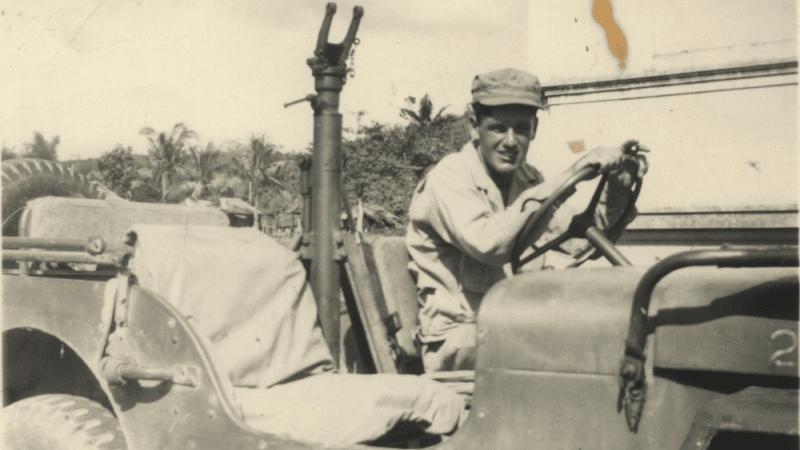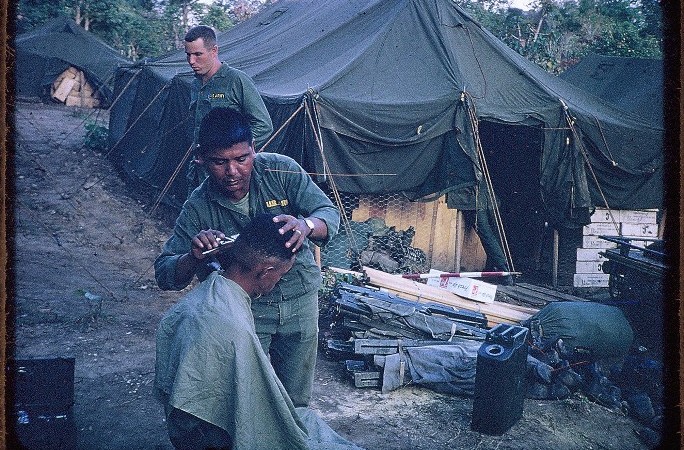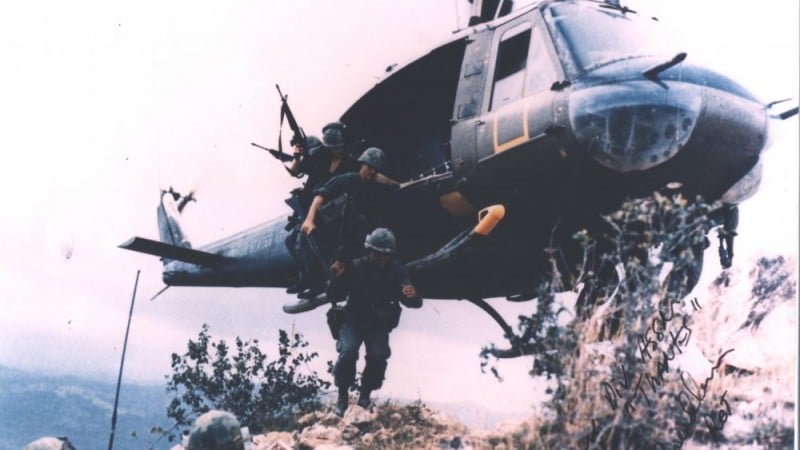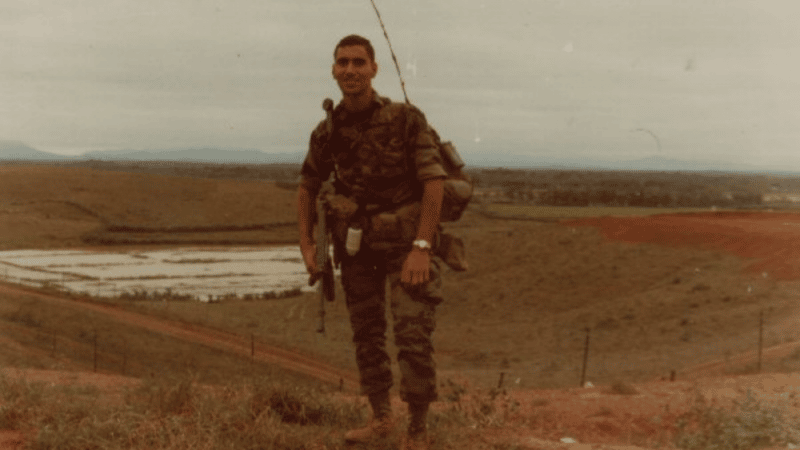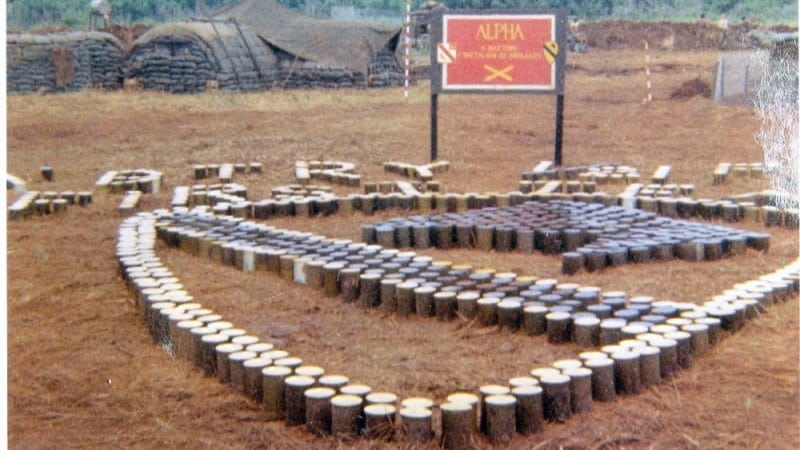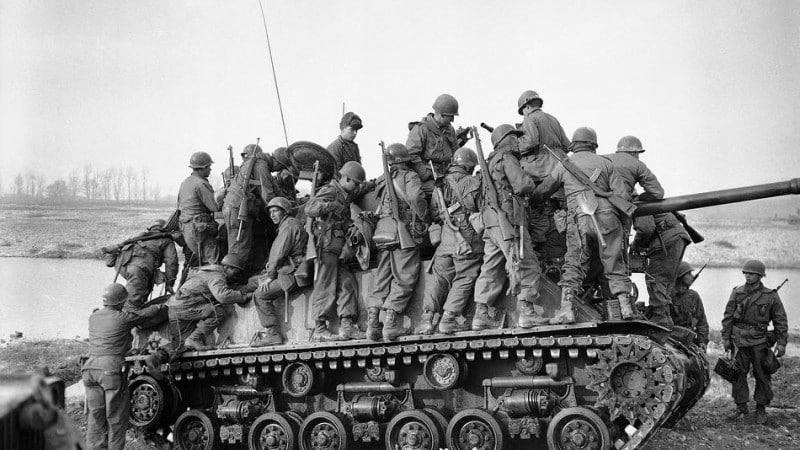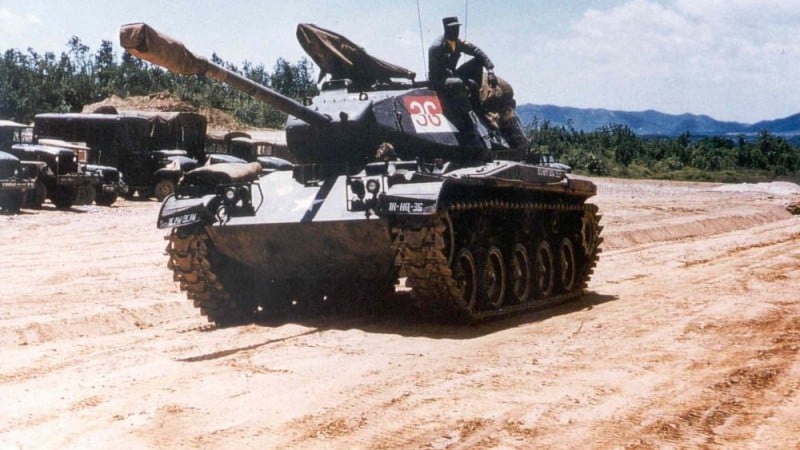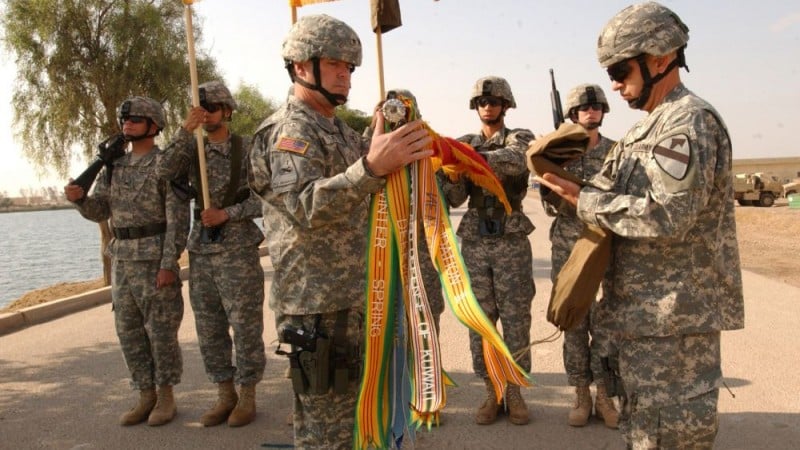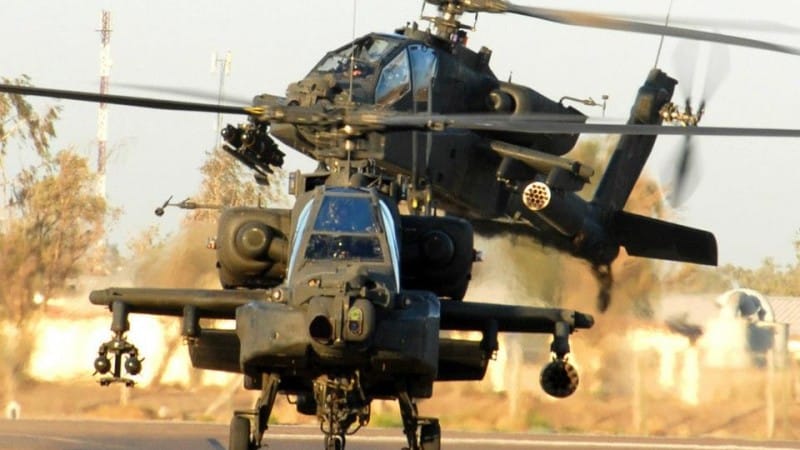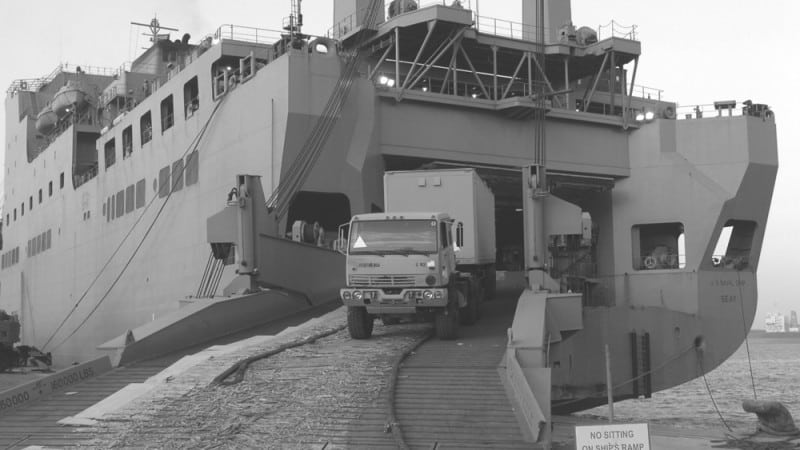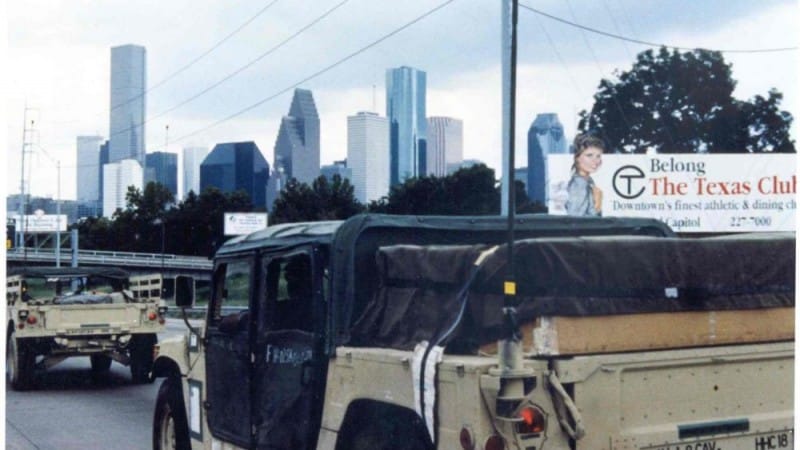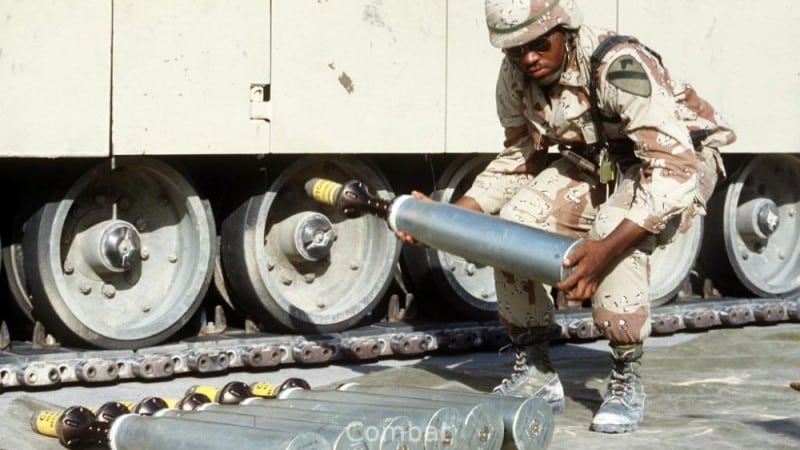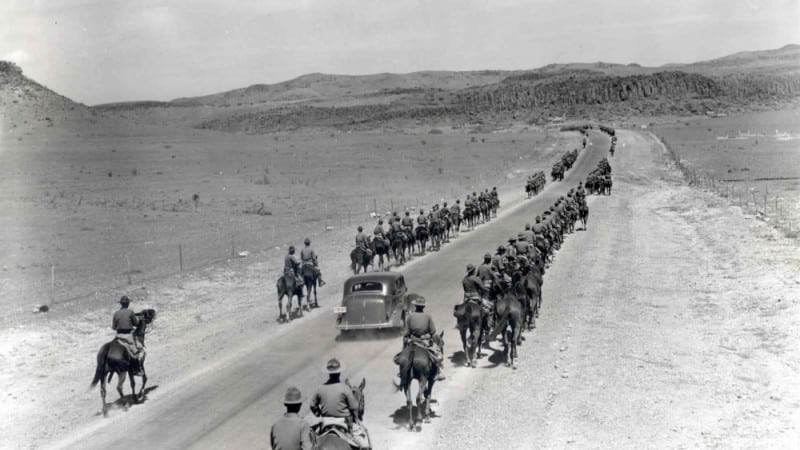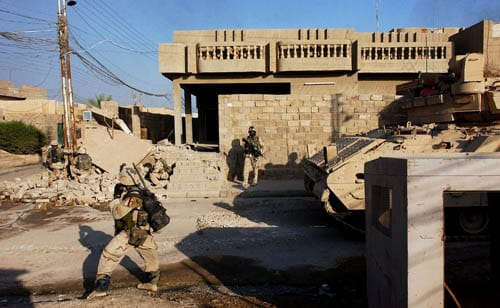82nd Field Artillery Regiment
“Can and Will”
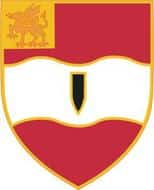
Information compiled and composed by William H. Boudreau
The United States Artillery can be traced back to the Military Company of Massachusetts, which was chartered in 1638, and with other colonial artillery companies formed what became the Continental Artillery. More than a century later, in April 1775, the legislature authorized the formation of an artillery regiment. This unit was first commanded by Colonel Richard Gridley, a former British artillery officer who later was replaced by Colonel Henry Knox. Colonel Knox eventually became the Chief of Artillery and is credited with shaping artillery tactics for the remainder of the Revolution.
The continued utilization of technical innovations throughout their history has enabled the artillery to be a decisive threat to destroy, neutralize, or suppress the enemy. Not since the formulation of gunpowder by the Chinese, two technical innovations faced the artillerymen; rifling and breech loading. To the forward looking military arsenal manufacturer, their utility was not in doubt – but the engineering of a reliable design and integrating the geometry of the ammunition into the cannon had many problems. You may be interested in reading about the technical and contractual problems of one such early pioneer, “The Free Enterprise Patriot”, who expended many years in building and testing a prototype, but was unable to supply a timely design to the Colonial Army; hence their introduction was delayed until the Civil War Period.
From the historical battlefields of Yorktown and Gettysburg, through the Western Plains, Mexican and Spanish American Wars, the artillery was always there. In fact, the nickname, “Redlegs”, comes from that era when artillery uniforms had a 2-inch red stripe on their trousers and horse artillery men wore red canvas leggings. Continuing through the modern days of the European and Asian Theaters of WWII, the Pusan Perimeter in Korea, the Ia Drang Valley in Vietnam, to the “Steel Rain” of Desert Storm, “Redlegs” have served with distinction and valor in all of our country’s armed conflicts.
The 82nd Field Artillery (Horse) Regiment traces its ancestry back to the famous “First Dragoons”, the original Regiment of the US Army. Because of the “dragon” or short musket, so called from the dragon’s head worked on the muzzle, the “First Dragoons” represented a type of fighting force, both unique and effective, for their service could be employed as mounted or dismounted troops. From the “First Dragoons” was formed the “First Cavalry” which in turn became the mother of the 24th Cavalry.
In preparation for the formation of the 24th Cavalry, the units currently known as the 1st, 2nd and 3rd Battalions, 82nd Field Artillery was constituted on 01 July 1916, in the Regular Army of the United States as “A” “B”, “C”, “D”, “E” and “F” Troops, 24th Cavalry. At a later time period, 01 June 1917, the unit that would later be known as the 5th Battalion 82nd Field Artillery was constituted in the Regular Army of the United States as “I” and “K” Troops, 24th Cavalry.
The 24th Cavalry was organized on 5 June 1917, with one third of the officers and enlisted men coming from the old First Cavalry. Subsequently, on 01 November 1917, the 24th Cavalry was reorganized as the 82nd Field Artillery Regiment at Fort D.A. Russell. The total strength of the 82nd FA Regiment was 62 officers, 1,448 enlisted men, 1,117 horses, and 114 mules. The entire 82nd FA Regiment eventually was relocated to at Camp Logan, Houston, TX, and then proceeded to Fort Bliss, TX and assigned to the 15th Cavalry Division.
Although training was in full swing and preparations were being made for overseas movement to fight the Germans, it was not to be. On 01 November 1917, units of the 82nd Field Artillery, 24th Cavalry, (“A” and “B” Batteries were consolidated as “A” Battery, “C” and “D” were consolidated as “B” Battery and “E” and “F” Batteries were consolidated as “C” Battery) were redesignated and transferred as the 82nd Field Artillery, an element of the 15th Cavalry Division,
The 15th Cavalry Division and the 82nd FA Regiment were specifically trained and equipped for border service. The Mexican rebel, General Francisco “Pancho” Villa, had been causing problems in cross border raids, and had committed acts of aggression against US citizens and Soldiers for a number of years. A Punitive Expedition led by General John J. Pershing into Mexico had been carried out in 1916-1917. A number of Pancho Villa’s rebel forces were either killed, captured or scattered. But Pancho Villa was never caught.
By 1919, Pancho Villa had reassembled a sizeable rebel force and had initiated several battles against Mexican military troops in an attempt to win the hearts and minds of the Mexican people to rally with him against President Carranza. In early June 1919, indications were received that Villa was moving his rebel forces north to attack the Mexican military troops at Ft. Hidalgo near Juarez, Mexico. The attack on Ft. Hidalgo began at 0010 hours on the morning of 15 June 1919 and lasted until 0050 hours. At 0130 hours, another attack by Villa’s forces broke out in a separate part of the city and a battle raged back and forth for most of the day. For reasons that may never be known, rebel snipers from Villas forces began foolishly to shoot sniper fire across the Rio Grande River into El Paso, TX, wounding several civilians.
At 0136 hours of 15 June 1919, the 82nd FA Regiment, minus Service Company, left camp at Ft. Bliss and headed towards El Paso to occupy pre-planned firing positions. The 82nd FA Regiment, consisting of approximately 20 officers and 475 enlisted men, deployed with Headquarters Company, 1st Battalion with “A” and “B” Batteries, the 2nd Battalion with “C” and “D” Batteries and the 3rd Battalion with “E” and “F” Batteries.
By 0230 hours, the 82nd FA Regimental Headquarters was in position at the El Paso Union Stockyards and the 1st and 3rd Battalions were in firing positions at Camp Cotton. At 0400 hours on 15 June 1919, the 1st Battalion, 82nd FA was directed to deploy two Firing Batteries near the El Paso Milling Company at the Stanton Street Bridge in support of the 24th Infantry Regiment. Occasional sniper shots were received from the Mexican side of the Rio Grande River in the vicinity of the 82nd FA Regimental Headquarters. At 2130 hours the 1st Battalion, 82nd FA were directed to support the advance of the 24th Infantry Regiment across the Rio Grande River into Juarez from its present artillery positions.
The District Headquarters ordered 3,600 American Soldiers to cross into Mexico to prevent further promiscuous firing into El Paso and to provide protection for American citizens. The American Force consisted of the 24th Infantry Regiment, the 5th Cavalry and 7th Cavalry Regiments, and the 2nd Battalion, 82nd FA. At 0020 hours the 1st Battalion, 82nd FA was directed to open fire on the Juarez Racetrack, as the Villistas had been definitely located there. The first artillery shot was fired across the Rio Grande River into the Juarez Racetrack by “A” Battery, 1st Battalion, 82nd FA. “A” Battery fired a total of 52 rounds and “B” Battery fired a total of 12 rounds before a “Cease Fire” was called at 0100 hours.
While the 24th Infantry Regiment was advancing through the streets of Juarez the 5th Cavalry and the 7th Cavalry Regiments were moving as a blocking force on either side of the advancing Infantry to prevent any flanking movements by the Villistas. The 2nd Battalion, 82nd FA advanced in support of the 5th Cavalry and 7th Cavalry Regiments and were prepared to fire quickly should targets of opportunity present themselves. By 0650 hours, the Combined Arms forces of the US Cavalry and the 2nd Battalion, 82nd FA were in pursuit of the rebel forces. They had marched southeast about six miles when a sizeable force of Villistas were spotted.
The 2nd Battalion, 82nd FA advanced towards the Villistas at an extended gallop and opened fire with shrapnel on their column at a range of about 4,000 yards. A direct hit was made with the first volley of shots and the shrapnel bursting overhead in the center of the rebel column wiped out a complete section. The other two sections of Villistas were routed and scattered in different directions. This action was completed around 0900 hours on 16 June 1919, by “D” Battery, 2nd Battalion FA. During the continued pursuit afterwards, an adobe shack was targeted, and a direct hit was made by the howitzers of the 2nd Battalion, 82nd FA. After this attack the bodies of twenty-five killed or wounded Villistas were found.
On the return march over 50 abandoned saddles, 300 horses and burros, and 100 rifles were scattered all over the area. Some of the rifles were of German manufacture and were brought back as souvenirs by members of the command. Most of the men of the 82nd FA Regiment that participated in the Battle of Juarez were entitled to wear the Mexican Service Medal.
In recognition of this battle, the Distinctive Unit Insignia for the 82nd FA Regiment shows a black artillery shell imposed on a wavy white background. The black artillery shell and the wavy white background are symbols of the first round shot across the Rio Grande River by “A” Battery, 1st Battalion, 82nd FA. As an integral part of the 82nd FA Regiment, the motto “Can and Will” are reflective of a spirit steeped in traditions of men doing what needs to be regardless of the obstacles to be overcome.
On 09 September 1921 the 82nd Field Artillery, comprised of “A”, “B” & “C” Batteries, was redesignated the 82nd Field Artillery (Horse) Battalion and assigned to the newly activated 1st Cavalry Division at Ft Bliss, TX. The 82nd FA Battalion was the only (Horse) Artillery in the US Army at that time. The designation (Horse) meant that all unit members rode mounted on horses instead of riding on the gun carriages.
On 17 March 1930, the 82nd FA Regiment was reactivated and the 82nd FA Battalion (Horse) was reorganized as the 1st Battalion, 82nd FA but lost its designation as (Horse). In parallel with the assignment of the 1st Battalion, 84th Field Artillery was redesignated as 2nd Battalion, 82nd Field Artillery and inactivated. Assignment to the 1st Cavalry Division was delayed until 01 December 1934. Concurrently “C” Battery of the 1st Battalion was relieved from assignment to the 1st Cavalry Division. In an internal reorganization, the 82nd FA Regiment was restructured, comprised of the 1st and 2nd Battalions. It would not be until 03 January 1941, that “C” battery would be reassigned to the 1st Battalion of the 82nd Field Artillery.
World War II, Pacific Theater, 1941 – 1945
On 03 January 1941, the tactical significance of the artillery organizations was recognized, with the activation of the 1st Division Artillery Headquarters and Headquarters Battery at Fort Bliss, Texas for extensive field training. By that time the 82nd Field Artillery had expanded to include two battalions.
In February 1943, the entire 1st Cavalry Division was alerted for an overseas assignment as a dismounted unit. An impatient 1st Cavalry Division was dismounted, and they were processed for movement to the Southwest Pacific theater as foot Soldiers. In mid-June 1943, the last troops of the division departed Fort Bliss, Texas for Camp Stoneman, California and later on 03 July, boarded the “SS Monterey and the S.S. George Washington” for Australia and the Southwest Pacific.
On 26 July, three weeks later, the division arrived at Brisbane and began a fifteen-mile trip to their new temporary home, Camp Strathpine, Queensland, Australia. The division received six months of intense combat jungle warfare training at Camp Strathpine in the wilds of scenic Queensland and amphibious training at nearby Moreton Bay. In January 1944 the division was ordered to leave Australia and sail to Oro Bay, New Guinea where the 82nd Field Artillery fired its first round in World War II. After a period of staging in New Guinea, it was time for the 1st Cavalry Division to receive their first baptism of fire.
On 27 February, Task Force “Brewer”, consisting of 1,026 Troopers, embarked from Cape Sudest, Oro Bay, New Guinea under the command of Brigadier General William C. Chase. Their destination was a remote, Japanese occupied island of the Admiralties, Los Negros, where they were to make a reconnaissance of force and if feasible, capture Momote Airdrome and secure a beachhead for the reinforcements that would follow.
Just after 8:00 on 29 February, the 1st Cavalry Troopers climbed down the nets of the APD’s and into the LCM’s and LCPR’s, the flat-bottomed landing craft of the Navy. The task force, including the 82nd and 99th Field Artillery Battalions, landed at Hayane Harbor and took the Japanese by surprise.
On 18 May 1944, the Admiralty Islands campaign officially ended. Japanese casualties stood at 3,317 killed. The losses of the 1st Cavalry Division included 290 dead, 977 wounded and 4 missing in action. Training, discipline, determination and ingenuity had won over suicidal attacks. The First Cavalry Troopers were now seasoned Veterans.
The unit’s actions in the Admiralty Islands prepared it for the amphibious assault on Leyte in the Philippines. The 82nd Field Artillery Battalion received a campaign streamer with arrowhead for participation in this action. On Columbus Day, 12 October 1944, the 1st Cavalry Division sailed away from its hard-earned base in the Admiralties for the Leyte invasion, Operation King II. On October 20, the invasion force must have appeared awesome to the waiting Japanese as it swept toward the eastern shores of Leyte. The Division fought tirelessly against Japanese fortifications. With the last of the strongholds of Leyte eliminated, the Division moved on to Luzon, the main island of the Philippines. Leyte had been the biggest campaign of the Pacific war, but the record was about to be shattered by the invasion of Luzon.
On 26 January, conveys were formed and departed for the Lingayan Gulf, Luzon Island, the Philippines. Landing without incident on 27 January, the division assembled in an area near Guimba and prepared for operations in the south and southwest areas. One of the First Team’s most noted feats was accomplished during the fighting for Luzon. General MacArthur issued an order “Get to Manila!”. The resulting mission, and the participating units, was dubbed a “flying column” by General Mudge. The rescue mission, led by Brig. General William C. Chase, was divided into three “serials”, of which included “A” Battery of the 82nd Field Artillery Battalion and “B” Battery of the 61st Field Artillery Battalion. On 03 February 1945, lead elements of the rescue column crossed the city limits of Manila at 6:35 PM, covering the 100 miles of rough terrain in approximately 66 hours.
Occupation of Japan, 1946 – 1950
On 13 August 1945, the 1st Cavalry Division was alerted that they were selected to accompany General Douglas MacArthur to Tokyo and would be part of the 8th Army in the occupation of Japan. On 02 September the long convey of ships steered from Subic Bay into Yokohama Harbor and past the battleship Missouri where General MacArthur would later receive the Japanese surrender party. The First Team was given the honor of leading the Allied Occupational Army into Tokyo. At noon on 05 September 1945, a reconnaissance team headed by Colonel Charles A. Sheldon, the Chief of Staff of the 1st Cavalry Division, entered Tokyo. This embarkment was the first official movement of American personnel into the capital of the mighty Japanese Empire.
At 8:00 on 08 September, a history making convey left Hara-Machida with Tokyo as their destination. Headed by Major General William C. Chase, commanding general of the 1st Cavalry Division, the party included a Veteran from each troop of the Division. Passing through Hachioji, Fuchu and Chofu, the Cavalry halted briefly at the Tokyo City Limits. General Chase stepped across the line thereby putting the American Occupational Army officially in Tokyo and adding another “First” to its name; “First in Tokyo”.
The first mission of the division was to assume control of the city. On 16 September, the 1st Cavalry Division was given responsibility for occupying the entire city of Tokyo and the adjacent parts of Tokyo and Saitama Prefectures. Artillery Headquarters and Headquarters Troops and other units were stationed at Camp Drake near Tokyo.
In September of 1945, the 82nd Field Artillery completed its war effort with occupation duties in Tokyo, Japan. While in Japan, the 82nd Field Artillery Battalion transitioned to 155mm howitzers and became the Red Team’s general support battalion.
1946 was welcomed as a new dawning of peace for the 1st Cavalry Division. The days of privation, hardship, suffering and death were over for the first time since 07 December 1940. They year found the 1st Cavalry Division in control of Tokyo and vicinity, the capital of the war-built Japanese Empire. On 01 March, the 1st Cavalry Division was given the occupational responsibility of seven prefectures of Japan, in addition to the four occupied during the previous months.
The 1st Cavalry Division began 1947 with the continuation of its occupation of the heart and nerve center of the Japanese Empire. Although there was no change in occupational policy, there had been vast changes among the Troopers themselves. The combat Veterans of the division had been replaced by new arrivals from the states. Their time was spent in receiving advanced training, guard duty, patrolling and specialist assignments.
As the new year of 1948 opened, the influence of the occupation was everywhere. Japan had been converted into a peaceful nation with a framework of government under its new constitution that would make it a lasting democracy. Reduction of troops continued throughout the year.
All ranks looked forward toward the new year of 1949 in anticipation of bringing the division up to standards of combat efficiency and morale for which it stood. Personnel increased approximately 70 percent over the previous levels of manpower. In March, the 1st Cavalry Division was redesignated 1st Cavalry Division (Infantry) and organized as a regular, triangular infantry division. By the end of the year, combat effectiveness had risen sharply over that of the previous year. The emphasis on training conducted by the division had netted the desired result.
Korean War, 1950 – 1952
1950 called for an increased training to improve the ever-increasing combat effectiveness of the Division which was soon to be tested as dawn approached on 25 June 1950. Less than 5 years after the terrible devastations of World War II, a new war broke out from a distant land whose name means “Morning Calm”. On 18 July the 1st Cavalry Division was ordered to Korea. Initially scheduled to make an amphibious landing at Inchon, it was redirected to the southeastern coast of Korea at Pohang-dong a port 80 miles north of Pusan. The North Koreans were 25 miles away when elements of the 1st Cavalry Division swept ashore to successfully carry out the first amphibious landing of the Korean War. Its initial mission was to establish the Pusan Perimeter. By 22 July, all regiments were deployed in battle positions; in itself a remarkable logistical achievement in the face of Typhoon Helene that pounded the Korean coastline.
Their baptism of fire came on 23 July. They were hit by heavy artillery fire and mortar barrage, and North Korean infantrymen swarmed toward their entrenched positions. During the first few weeks, the division artillerymen were fighting with small arms alongside their thundering artillery pieces. One cannoneer suggested that the crossed cannons of the artillery be changed to one cannon and one rifle. The Korean Conflict was chaotic and difficult for the artillery. Classical front lines disappeared. Artillery units often found themselves surrounded and artillerymen were called upon to fight side by side with the infantry. Artillery personnel were used to perform rear guard actions. To make up for their own lack of artillery, the North Koreans made battery positions their prime targets. Batteries had to fight off invaders in close combat and still fire their guns in support of the combat operations.
The Pusan Perimeter continued to hold. With added reinforcements, Pusan became a staging ground and depot for United Nations supplies and Soldiers from all around the world. Solders of the United Nations forces became First Team Troopers, when they were attached to the 1st Cavalry Units and fought alongside of them. The defenders now outnumbered the attackers, and they had the equipment and firepower to go on the offensive.
In late October 1950, orders came from I Corps to saddle up the rest of the Division and move north. The Korean War seemed to be nearing a conclusion. The North Korean forces were being squeezed into a shrinking perimeter along the Yalu and the borders of Red China and Manchuria. By now, more than 135,000 Red troops had been captured and the North Korean Army was nearly destroyed.
On 25 October 1950, the Korean War took a grim new turn. The sudden intervention of Communist Chinese forces dashed hopes of a quick end to the war. On 01 November 1950, an aerial observer in an L-5 Plane directed fires of the 82nd Field Artillery onto columns of Chinese forces entering Korea. This action was one of the first contacts between the First Team and the Chinese. In the morning of 01 November, patrols from the 1st and 2nd Battalions, 8th Cavalry, clashed with Soldiers clearly identified as Red Chinese. By 28 December, the true extent of the enemy buildup had become clear. There were at least 20 Red Chinese divisions poised for a drive on Seoul. Now there were almost a million and a half Chinese and North Korean troops on the Korean peninsula.
On 25 January 1951, the First Team moved back into action. The movement began as a reconnaissance in force to locate and assess the size of the Red Army, believed to be at least 174,000. The Eighth Army moved slowly and methodically, ridge by ridge, phase line by phase line, wiping out each pocket of resistance before moving farther North. The advance covered 2 miles a day, despite heavy blinding snowstorms and subzero temperatures.
From 09 June to 27 November, the 1st Cavalry took on various rolls in the summer-fall campaign of the United Nations. On 18 July, a year after it had entered the war, the 1st Cavalry Division was assigned to a reserve status. In late fall, the artillerymen were being relieved by elements of the 45th Infantry Division and they began their rotation back to Hokkaido, Japan. During the campaign they had fired 1,345,250 rounds of ammunition.
Return To Japan 1952 – 1957
On 27 November, the advance party from the division left Korea and by late January 1952, all units had arrived on Hokkaido, under the command of Major General Thomas L. Harrold. Arriving in the port of Muroran, each unit was loaded on trains and moved to the new garrison areas. Three camps were established outside Sappro, the Islands capital city. The division controlled a huge training area of 155,000 acres. The mission of the division was to defend the Island of Hokkaido and to maintain maximum combat readiness.
The Korean War wound down to a negotiated halt when the long-awaited armistice was signed at 10:00 on 27 July 1953. A Demilitarized Zone (DMZ), a corridor – 4 kilometers wide and 249 kilometers long, was established dividing North and South Korea. The nominal line of the buffer zone is along the 38th parallel; however, the final negotiations of the adjacent geographical areas, gave the North Korean Government some 850 square miles south of the 38th parallel and the South Korean Government some 2,350 square miles north of it.
In September 1954, the Japanese assumed responsibility for defending Hokkaido and the First Team returned to the main Island of Honshu. For the next three years the division guarded the northern sections of Honshu until a treaty was signed by the governments of Japan and the United States in 1957. This accord signaled the removal of all U.S. ground forces from Japan’s main islands.
Demilitarized Zone, 1957 – 1965
On 20 August 1957, the 1st Cavalry Division, guarding the northern sections of Honshu, Japan was reduced to zero strength and transferred to Korea (minus equipment). On 15 October 1957, the 82nd Field Artillery was inactivated and relieved from assignment to the 1st Cavalry Division. Following their inactivation and release from assignment to the 1st Cavalry Division, the three battalions of the 82nd Field Artillery went their separate ways.
On 01 June 1958, the 1st Battalion (less “B” Battery) was redesignated as Headquarters and Headquarters Battery 1st Missile Battalion, 82nd Artillery and activated on 24 June 1958 in Italy. On 20 April 1964, the battalion was inactivated in Italy. On 31 October 1967, the battalion was redesignated as the 1st Battalion, 82nd Artillery. On 10 January 1968, the 1st Battalion, 82nd Artillery was assigned to the Americal Division (23rd Infantry Division) and activated at Fort Lewis, Washington. On 01 September 1971, the battalion was redesignated as 1st Battalion, 82nd Field Artillery. On 10 November 1971, the battalion was relieved from assignment to the 23rd Infantry Division. On 21 June 1975, the 1st Battalion, 82nd Field Artillery rejoined the 1st Cavalry Division at Fort Hood, Texas.
On 01 June 1958, the 2nd Battalion was redesignated as Headquarters and Headquarters Battery 2nd Missile Battalion, 82nd Artillery and activated on 25 June 1958 in Germany. On 25 March 1964, the battalion was inactivated in Germany. On 01 September 1971, the battalion was redesignated as the 2nd Missile Battalion, 82nd Field Artillery. In 1988, the Battalion was redesignated as 2nd Battalion, 82nd Field Artillery and assigned to the 3rd Armored Division in Germany. During Desert Shield and Desert Storm, the Battalion provided direct support fires to the 3rd Brigade, 3rd Armored Division. In 1991, the Battalion was inactivated in Germany.
On 01 June 1958, the 3rd Battalion was redesignated as Headquarters and Headquarters Battery, 3rd Gun Battalion, 82nd Artillery and activated on 25 June 1958 in Germany. On 20 December 1963, the Battalion was inactivated in Germany. On 10 September 1964, the Battalion was redesignated as the 3rd Battalion, 82nd Artillery and assigned to the 196th Infantry Brigade. On 15 September 1965, the Battalion was activated as a 105mm towed battalion at Fort Devens, Massachusetts and was assigned to the Americal Division (23rd Infantry Division).
On 01 June 1958, “B” Battery, 1st Battalion, 82nd Field Artillery Battalion was reconstituted. On 31 July 1959, the battery was redesignated as Headquarters and Headquarters Company, 5th Battalion, 82nd Artillery and on 01 July 1965, was subsequently redesignated as “E” Battery, 82nd Artillery and concurrently transferred (less personnel and equipment) from Korea to Fort Benning, Georgia, reorganized and assigned to the new 1st Cavalry Division (Airmobile).
Vietnam War, 1965 – 1972
The 82nd Artillery Regiment arrived in Vietnam and interestingly, they arrived in three units, each reporting to separate divisions. Elements of “E” Battery, 82nd Artillery, 1st Cavalry Division (Airmobile) began arriving in Vietnam in August 1965. The 3rd Battalion, 82nd Artillery, 23rd Infantry Division (Americal Division) arrived in Vung Tau, Vietnam on 15 August 1966. The 1st Battalion, 82nd Field Artillery, 23rd Infantry Division (Americal Division) arrived in October 1968.
Organic to the DIVARTY, the mission of “E” Battery was to provide Aerial reconnaissance, tracking of artillery fire and command liaison for the 1st Cavalry Division, with auxiliary functions of aerial surveillance, resupply of artillery elements, personnel and medical airlift. By 30 September, “Echo” Battery pilots had logged 359 hours in 382 missions utilizing primarily OH-13 observation helicopters. At that time their asset inventory included four UH-1B helicopters.
In December 1965, the use of fixed wing aircraft in Operation “Clean House”, led the battery to request permanent assignment of airplanes to the unit. In 1966, the battery continued to serve as the eyes of the artillery and to provide transport for DIVARTY and battery officers. In response to the request for fixed wing aircraft, O-1 “Bird Dogs”, gave the batteries new capabilities as high-flying observers to adjust the strike of distant artillery guns.
Upon their arrival in 1966, the 3rd Battalion, 82nd Artillery, Americal Division was immediately airlifted to Tay Minh, where their first fire base was constructed. Subsequent locations of firebases in Vietnam were established at Chu Lai, Tam Ky and Da Nang. On 01 November, the 3rd Battalion came under the control of the 196th Infantry Brigade.
In Operation “Pershing”, the longest single mission of the division, “Echo” Battery carried out their mission of direct support for three artillery batteries and DIVARTY. In October 1967, the 3rd Brigade was placed under operational control of the Americal Division in the Chu Lai area. With the end of Operation “Pershing in January 1968, “Echo” Battery moved to Camp Evans located in I Corps area. The first mission of the battery was to provide surveillance for the drive to force the enemy out of dug-in positions and in and surrounding the enemy held city of Hue.
On 02 November 1968, the main body of “Echo” Battery left Camp Evans for the new base camp of the division located in III Corps, Phouc Vinh. On 08 November, Operation SHERIDAN SABER, the interdiction of major enemy force movement, began. Light Observation Helicopter (LOH) sections of “Echo” Battery were located in Tay Ninh, Ton le Chan and Quan Loi in support of 2nd Battalion, 19th Artillery, 1st Battalion, 21st Artillery and 1st Battalion, 77th Artillery.
On 15 February 1969, the 3rd Battalion was relieved from assignment to the 169th Infantry Brigade and was reassigned to the Americal Division (23rd Infantry Division). On 01 September 1971, the 3rd Battalion was redesignated as the 3rd Battalion, 82nd Field Artillery. In early June, the “Red Dragons” departed Vietnam. On 30 June 1972, the battalion was inactivated in Oakland, California. On 16 June 1986, the 3rd Battalion, 82nd Field Artillery rejoined the 1st Cavalry Division at Fort Hood, Texas.
With 26 March 1971 being officially marked the end of duties in Vietnam for the 1st Cavalry Division, “Echo” Battery was inactivated on 10 April. On 21 January 1977, “Echo Battery” was reactivated as “Echo” Battery, 82nd Field Artillery at Ft. Hood, Texas and remained assigned to the 1st Cavalry Division.
Persian Gulf War, Southwest Asia, 1990-1991
In August 1990, the 1st Cavalry Division Artillery, along with the 1st and 3rd Battalions of the 82nd Field Artillery was alerted for deployment to Southwest Asia as part of the joint forces participating in Operation Desert Shield. The focus at that time was the defense of Saudi Arabia against potential Iraqi attack. The First Team Soldiers flew from Robert Gray Army Airfield to Dhahran International Airport via Paris, France and Cairo, Egypt. As soon as their equipment arrived, they moved to the remote Assembly Area Horse (AA Horse) in the Saudi desert 160 miles west of the airport.
As a separate unit, the 2nd Battalion, 82nd Field Artillery deployed to Southwest Asia as part of Operation Desert Shield. It provided direct support fires for 3rd Brigade, 3rd Armored Division during Operation Desert Storm against the Iraqi Republican Guard. Following the conflict, the battalion returned to Germany and was again inactivated.
By 13 January 1991, the division moved north toward the juncture of the Saudi, Iraq and Kuwait borders through a series of defensive positions designed to thwart any preemptive attack along the Wadi. Meanwhile, the air war began, and other Allied ground forces began to reposition for the offense. The “Red Team” began a calculated war of deception along the Saudi border. Among the various actions taken were: The First Team’s Multiple Launched Rocket Systems (MLRS) repeatedly lit the sky, battering targets deep in Iraq. Cannon batteries fired Copperhead rounds (computer controlled, rocket assisted projectiles) and thousands of high explosives along with improved conventional munitions into Iraq.
Operation Red Storm, a VII Corps Artillery-Aviation raid up the Wadi Al – Batin, was designed to make the Iraqis believe that the Wadi was being prepped for the main offensive. It utilized the resources of the 11th Aviation Brigade, the 1st Cavalry Division Artillery, and elements of the VII Corps Artillery. Just prior to 0100 hours, 16 February 1991, the artillery units fired a 3-minute prep on selected targets, followed by Apache attack helicopters crossing the Berm to engage targets of opportunity. In conjunction with this action, USAF assets attacked targets deep in Iraqi.
The goal was to lure Saddam Hussein into believing the main ground attack of the Allies would come up the Wadi al-Batin, a natural invasion route, causing him to reposition additional forces there. The deception consisted of three major thrusts: (1) On 16 February 1991, in Operation RED STORM – a night artillery and attack helicopter raid conducted in the Ruqi Pocket, the First Cavalry Division Artillery fired against Iraqi targets in the Wadi al-Batin. (2) On 19 February 1991, in “Operation KNIGHT STRIKE – a reconnaissance in force conducted by TF 1-5 CAV up the Wadi al-Batin to determine the strength, composition, and disposition of Iraqi forces in the area. This operation, intended to make the Iraqis think that a major attack up the Wadi al-Batin was being initiated, was the first mounted combat in Iraq during the war. It was also the bloodiest battle of the war for the First Cavalry Division. On the opening of the ground war, the Blackjack Brigade, supported by the Aviation Brigade Apache helicopters, moved 10 miles into Iraq on a “reconnaissance in force”. The Brigade broke contact after penetrating enemy obstacles, taking fire and causing the enemy to light oil fire trenches. They withdrew south to join the division for the subsequent series of final attacks. (3) On 24 February 1991, in Operation QUICK STRIKE – The 3rd Battalion, 82nd FA, reinforced by “A” Battery, 21st FA (MLRS), fired in support of the 2nd “Blackjack” Brigade’s attack up the Wadi al Batin on “G-Day”, the first day of the ground campaign. This attack was a “feint”; intended to make the Iraqis think that the coalition main attack was coming up the Wadi Al-Batin.
This operation was an unqualified success. The enemy reacted as anticipated. Iraqi divisions focused on the coalition threat in the Wadi, and the First Team froze them. The deception worked, in that it tied down four Iraqi divisions, leaving their flanks thinned and allowed the VII Corps to attack virtually unopposed, conducting a successful envelopment of Iraqi forces to the west.
On 28 February 1991, 100 hours after General Norman Schwarzkopf had initiated the ground attack, President George Bush ordered a cease-fire. In the 100 hours of battle before the cease-fire went into effect, the Iraqis had lost 3,847 of their 4,280 tanks, over half of their 2,880 armored personnel carriers, and nearly all of their 3,100 artillery pieces. Only five to seven of their forty-three combat divisions remained capable of offensive operations.
1st Cavalry Division units setup defensive positions where the cease fire had stopped their attack and then expanded north to “Highway 8” clearing bunkers and looking for enemy equipment and Soldiers. Captured Iraqi Soldiers interviewed testified to the overwhelming, shattering effects of the “Steel Rain” of the Multiple Launched Rocket Systems. Within two weeks, the 1st Cavalry Division moved south into Saudi Arabia and the new assembly area (AA) Killeen. There on the plain of the Wadi al-Batin, the Division began to prepare for redeployment home.
Returning to Ft. Hood, the 1st and 3rd Battalions, 82nd Field Artillery continued the constant effort of personnel and equipment readiness preparation. On 16 December 1992, the 2nd Battalion, 82nd Field Artillery rejoined the 1st Cavalry Division at Ft. Hood, Texas. Since that time, the 82nd Field Artillery has fielded the Advanced Field Artillery Tactical Data System, the M-109A6 Paladin Howitzer, participated in National Training Center rotations, “no notice” redeployments to Kuwait in which Soldiers are deployed from each battalion and each separate battery to Southwest Asia.
Desert Peacekeepers, 1992 – 2000
In early July of 1996, the Regiment began fielding of the M109A6 155mm Paladin Howitzer.
From September through December of 1996, the 2nd “Steel Dragons” battalion participated in and led the way during Operation Desert Strike. The Steel Dragons were also the first to draw the new Paladins in Kuwait and the first to live fire and test the Paladins in theater. Additionally, the battalion was first to establish digital communications and conduct full-scale operations with the AFATDS. Along with paving the way for all other artillery units to follow, by live firing over 2000 rounds and providing baseline calibrations for the Paladins, the Steel Dragons also conducted Officer Professional Development classes and training exercises with Kuwaiti Army.
Operation JOINT FORGE, 1998 – 1999
In April 1998, the IRONHORSE Brigade was alerted for peace enforcement duty in Bosnia-Herzegovina as part of Stabilization Forces (SFOR) 4 on Operation Joint Forge. Although units of the 1st Cavalry Division are deployed routinely around the world, the Division Headquarters had not deployed since DESERT STORM. In August 1998, the headquarters command staff of the division deployed and were stationed at Camp Eagle near Tuzla, Bosnia during the entire year-long deployment. It was planned that the 1st Brigade Combat Team with the 1st Battalion, 82nd Field Artillery, at Eagle Base (and other subordinate units) would be replaced by the 3rd Battalion, 82nd Field Artillery of the 2nd Brigade and its subordinate units.
In August 1999, the 10th Mountain Division, with its subordinate units, replaced the 1st Cavalry Division Headquarters, 4th Brigade, 312th Military Intelligence Battalion, and 13th Signal Battalion. The 2nd Brigade with the 3rd Battalion, 82nd Field Artillery (and other subordinate units) Combat Team would remain in Bosnia under the control of the 10th Mountain Division until October 1999 when, as the last unit of the 1st Cavalry Division to return, it would redeploy to Ft. Hood.
Enduring Freedom, 2001
On 20 November 2001 the 3rd Battalion answered the call once again, deploying to Kuwait for Operation Enduring Freedom. The Battalion achieved the mission of defending Kuwait and deterring aggression in the region.
Iraqi Freedom, 2003 – 2005
In January 2004, the 3rd “Red Dragons” Battalion deployed in support of Operation Iraqi Freedom II. During the deployment, the Battalion conducted thousands of security patrols and searched hundreds of suspected enemy locations to disrupt insurgent activities. The “Red Dragons” spent countless hours building and developing a company of the new Iraqi National Guard before redeploying to Ft. Hood in February 2005.
In March of 2004, the 1st Battalion 82nd Field Artillery deployed to Eastern Baghdad, Iraq to participate in the Transition of Iraq. The battalion redeployed to Ft. Hood, TX in March of 2005.
Modular Forces, 2005
In July 2005, as a part of the Army Modularity Plan “C” Battery, 1st Battalion, 82 Field Artillery was deactivated. On October 2005, 1-82 FA became a Unit of Action Fires Battalion. In addition, Golf Forward Support Company was attached to provide organic combat service support to the battalion.
On 5 September 2005, the 3rd “Red Dragons” Battalion deployed with 72 hours notice to New Orleans, Louisiana to support the humanitarian relief efforts of Hurricane Katrina. The Battalion conducted presence patrols, distributed supplies and helped serve meals to more than 350 members of the St. Mary’s Mission. The “Red Dragons” were highly successful in restoring order and providing comfort to their fellow Americans.
On 17 October 2005, E” Battery, 82nd Field Artillery was redesignated as the 5th Battalion, 82nd Field Artillery Regiment and assigned to the 4th Brigade Combat Team, 1st Cavalry Division.
Iraqi Freedom – IV, 2006 – 2008
In March 2006, 1st “Dragons” Battalion, 82nd Field Artillery was redesignated as Task Force 1-82 in preparation for deployment to Iraq in support of Operation Iraqi Freedom 06-08. In addition, Delta Troop was organized to provide maneuver capabilities on the battlefield. On October 2006, Task Force 1-82 FA deployed to Northern Baghdad for fifteen months in support of National Resolution.
In October 2006, the 3rd “Red Dragons” Battalion deployed to Baghdad, Iraq, in support of Operation Iraqi Freedom 06-08. During this deployment, the Red Dragons provided continuous security and services to the people of the Qadisiyah and Janayn Hayy’s in the Karkh district of western Baghdad. In addition to the counterinsurgency mission, the red dragons conducted non-standard missions in support of the American embassy and 1st Cavalry Division. The battalion executed over 2,500 combat escort missions of 60,000 contractors, Department of State personnel and senior military officers. Escort missions included the safe transportation of $13 billion throughout Baghdad. In their artillery role, they fired over 4,500 155mm artillery rounds in support of maneuver operations and counter fire. The Red Dragons safely redeployed to Ft. Hood in January 2008.
The 5th Battalion earned a Valorous Unit Award for extraordinary heroism during Operation Iraqi Freedom from 31 October 2006 to 30 September 2007. In March 2008, the battalion was reflagged and relocated to Ft. Hood, Texas.
Iraqi Freedom VI, 2008 – 2010
In January 2009, the 3rd “Red Dragons” Battalion again deployed in support of Operation Iraqi Freedom. The battalion was given authority for the volatile city of Kirkuk and bordering Kurdish areas in vicinity of the “Green Line.” The mission required the red dragons to organize as a maneuver battalion and secure the population in the provincial capital, the largest city in the 2md BCT area of operations. Kirkuk was the heart of the ethnic struggle in Iraq and widely considered the main effort of American forces in shaping a future Iraq. Partnering with Iraqi police and the Kurdish regional army, the red dragons reduced violent extremist activity by over 75% over the course of the year. The complexity of the environment required over thirty Iraqi unit partnerships and the maintenance of over 100 spheres of influence, many of which had never before partnered with American units. The battalion led the way in both civil and information operations as well, completing the largest civil projects in Multinational Division North (MND-N). Not forsaking our artillery role, the “Steel Dragons”, Alpha Battery, 2-82 FA were the first in MND-N to fire Excalibur munitions and followed with several missions in support of other units. Through much of the deployment, Alpha Battery supported operations in Mosul from combat outpost power. Partnered with Iraqi army and police, alpha battery played a key role in MND-N’s decisive effort of securing the last major violent extremist stronghold in Iraq. Alpha battery returned to the Red Dragons in July of 2009 for operations in Kirkuk and the battalion safely redeployed in December of 2009.
From June 2008 to June 2009, the 5th Battalion deployed in support of Operation Iraqi Freedom 08-10.
In February 2009, the 1st Battalion, 82nd Field Artillery deployed to Baghdad in support of Iraqi Sovereignty. The Battalion supported the 3rd Brigade, 82nd Airborne Division and the 1st Combat Brigade, 1st Cavalry Division, during combat operations in Iraq. The Battalion re-deployed to Fort Hood, TX in January of 2010.
The 5th Battalion, 82nd Field Artillery was inactivated along with the 4th Brigade Combat Team on 17 October 2013 in a ceremony conducted on Cooper Field in front of the 1st Cavalry Division’s headquarters.
The 3rd Battalion, 82nd Field Artillery was inactivated at Ft. Hood, TX on 5 May 2015 and was redesignated as the 3rd Battalion, 16th Field Artillery and remained assigned to the 2nd Brigade Combat Team of the 1st Cavalry Division.
As a member of the “Red Team”, the 1st and 2nd Battalions of the 82nd Field Artillery stand ready to support the “First Team” in the defense of freedom and security of peace anytime anywhere they are needed.
